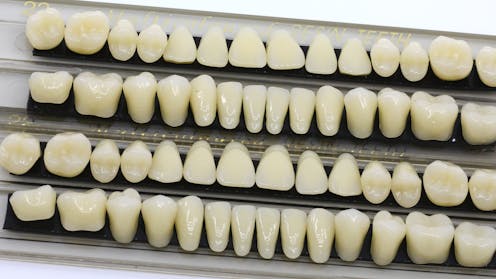Research from the Australian National University highlights how teeth can provide a detailed record of childhood climate and diet. This study demonstrates that the development of teeth captures subtle changes in environmental conditions, offering insights into individual lives that span thousands or even millions of years.
The researchers examined the teeth of various subjects, including wild chimpanzees, captive macaque monkeys, and a woman born in Brisbane in January 1990. The findings illustrate how climatic events during childhood leave a lasting imprint on dental enamel, effectively creating a week-by-week history of the individual’s early environment.
Understanding the Science Behind Teeth and Climate
Changes in rainfall and temperature affect local drinking water, which in turn influences the proportions of oxygen isotopes found in teeth. Specifically, the isotopes oxygen-18 and oxygen-16 reveal patterns that correlate with past environmental conditions. The research team utilised a machine known as the Sensitive High Resolution Ion MicroProbe (SHRIMP) to analyse tooth enamel. They vaporised tiny sections of enamel corresponding to daily growth lines and assessed the isotopic composition of the vapour.
In the case of the Brisbane subject, her tooth enamel formed during a particularly wet summer influenced by a cyclone. The isotopic analysis revealed a clear correlation between the oxygen isotopes and local rainfall patterns, with minimum values indicating the wettest periods and maximum values reflecting drier spells. After her first birthday, interpreting these climate markers became more complex due to her dietary changes, as she began consuming more cooked foods.
Linking Diet to Isotopic Changes
The SHRIMP technology also enabled researchers to study dietary impacts on teeth by measuring nitrogen isotopes in the dentine beneath the enamel. The relationship between nitrogen-15 and nitrogen-14 is well established in assessing dietary protein sources. In this study, the donor exhibited a significant rise in nitrogen isotope values from birth, reflecting her mother’s high-nitrogen milk.
As she began to incorporate solid foods such as bread, cheese, and vegetables into her diet after six months, the nitrogen isotope ratio showed a corresponding decline. By the end of her breastfeeding period, the nitrogen values had reached their lowest point, indicating a complete transition to a varied diet.
The study’s methodology represents a breakthrough in isotopic analysis, moving beyond traditional sampling techniques that often fail to capture short-term environmental changes. This new approach has allowed researchers to investigate ancient populations, including Neanderthal children from the Rhône basin of France who lived approximately 250,000 years ago. By correlating isotopic data with tooth formation ages, the team could estimate the seasons during which these individuals were born and weaned.
The implications of this research extend far beyond the present day. The isotopic analysis techniques developed at the Australian National University can also be applied to ancient fossils, including those of apes from Africa dating back 17 million years. This research is shedding light on how climate changes have influenced the evolution and development of early human ancestors.
In conclusion, the innovative use of isotopic analysis reveals that teeth are not merely tools for chewing but are, in fact, storied records of our childhood environments. As scientists continue to refine these techniques, they will undoubtedly unveil more about how climate and diet have shaped not only our individual lives but also the broader narrative of human history.
Tanya M. Smith, one of the researchers, receives funding from the Australian Research Council, which supports such groundbreaking studies.



























































